

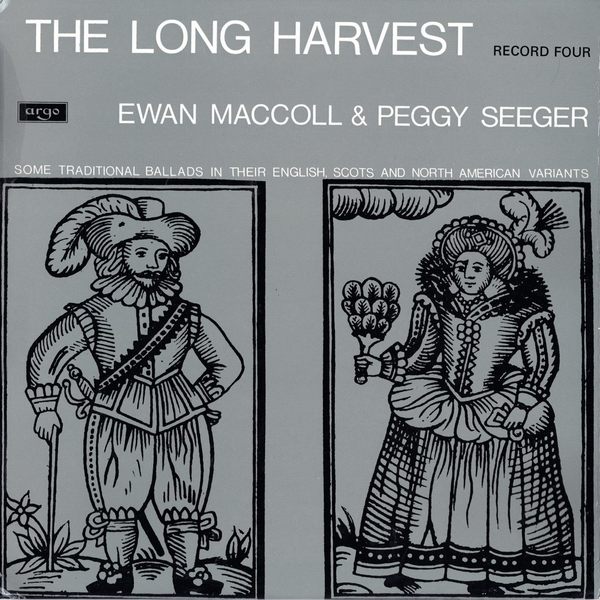 |
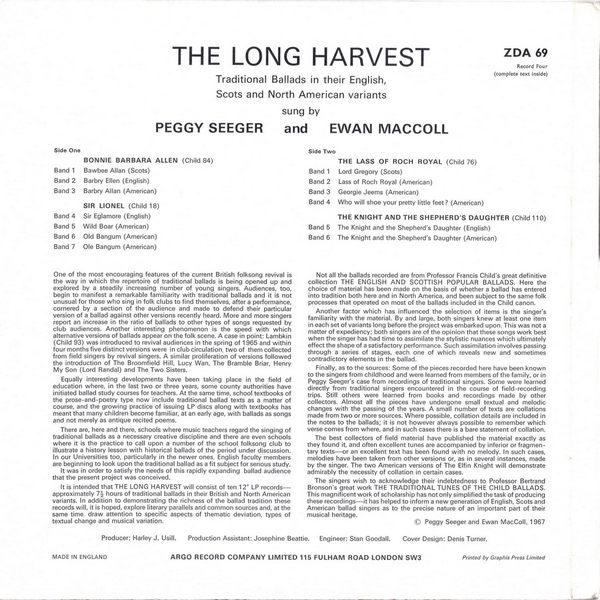
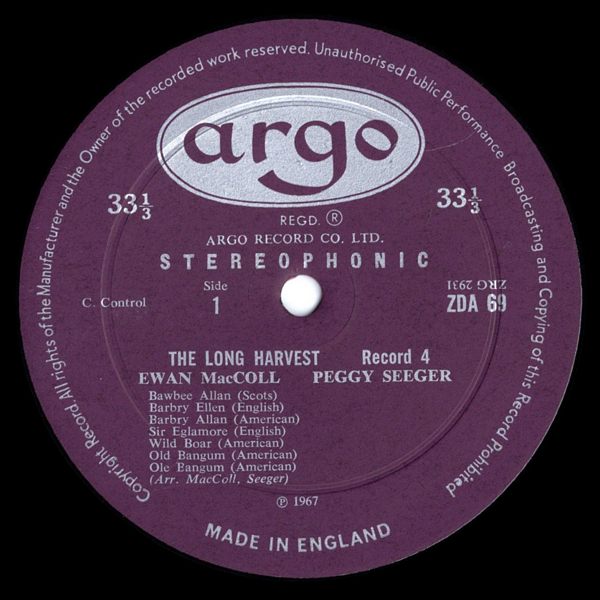
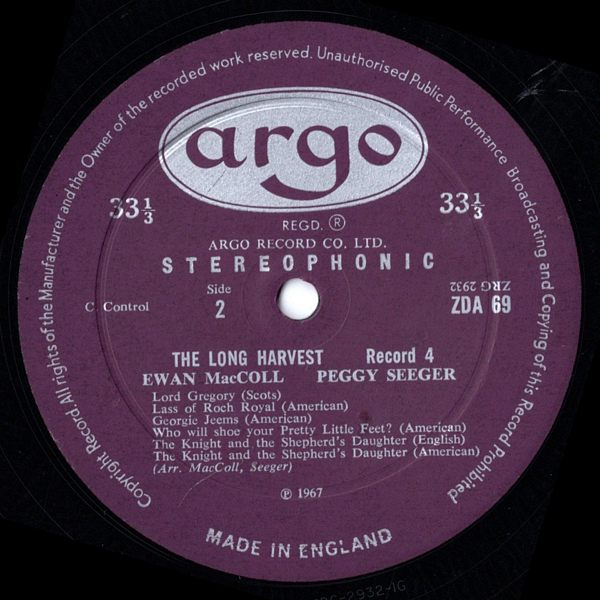
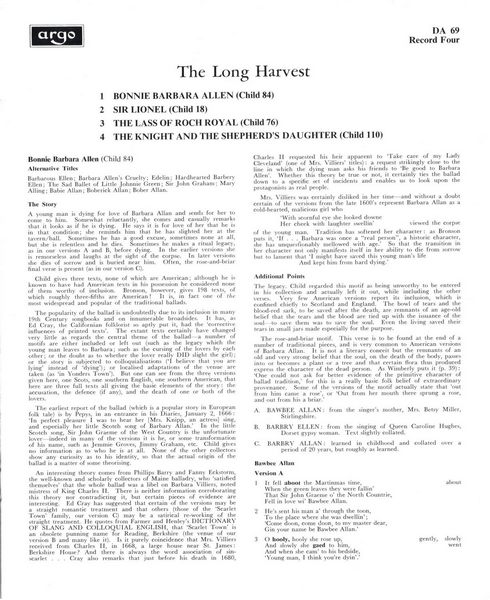 |
Sleeve Notes
One of the most encouraging features of the current British folksong revival is the way in which the repertoire of traditional ballads is being opened up and explored by a steadily increasing number of young singers. Audiences, too, begin to manifest a remarkable familiarity with traditional ballads and it is not unusual for those who sing in folk clubs to find themselves, after a performance, cornered by a section of the audience and made to defend their particular version of a ballad against other versions recently heard. More and more singers report an increase in the ratio of ballads to other types of songs requested by club audiences. Another interesting phenomenon is the speed with which alternative versions of ballads appear on the folk scene. A case in point: Lambkin (Child 93) was introduced to revival audiences in the spring of 1965 and within four months five distinct versions were in club circulation, two of them collected from field singers by revival singers. A similar proliferation of versions followed the introduction of The Broomfield Hill, Lucy Wan, The Bramble Briar, Henry My Son (Lord Randal) and The Two Sisters.
Equally interesting developments have been taking place in the field of education where, in the last two or three years, some county authorities have initiated ballad study courses for teachers. At the same time, school textbooks of the prose-and-poetry type now include traditional ballad texts as a matter of course, and the growing practice of issuing LP discs along with textbooks has meant that many children become familiar, at an early age, with ballads as songs and not merely as antique recited poems.
There are, here and there, schools where music teachers regard the singing of traditional ballads as a necessary creative discipline and there are even schools where it is the practice to call upon a number of the school folksong club to illustrate a history lesson with historical ballads of the period under discussion. In our Universities too, particularly in the newer ones, English faculty members are beginning to look upon the traditional ballad as a fit subject for serious study. It was in order to satisfy the needs of this rapidly expanding ballad audience that the present project was conceived.
It is intended that THE LONG HARVEST will consist of ten 12" LP records — approximately 7 1/2 hours of traditional ballads in their British and North American variants. In addition to demonstrating the richness of the ballad tradition these records will, it is hoped, explore literary parallels and common sources and, at the same time, draw attention to specific aspects of thematic deviation, types of textual change and musical variation.
Not all the ballads recorded are from Professor Francis Child's great definitive collection THE ENGLISH AND SCOTTISH POPULAR BALLADS. Here the choice of material has been made on the basis of whether a ballad has entered into tradition both here and in North America, and been subject to the same folk processes that operated on most of the ballads included in the Child canon.
Another factor which has influenced the selection of items is the singer's familiarity with the material. By and large, both singers knew at least one item in each set of variants long before the project was embarked upon. This was not a matter of expediency; both singers are of the opinion that these songs work best when the singer has had time to assimilate the stylistic nuances which ultimately effect the shape of a satisfactory performance. Such assimilation involves passing through a series of stages, each one of which reveals new and sometimes contradictory elements in the ballad.
Finally, as to the sources: Some of the pieces recorded here have been known to the singers from childhood and were learned from members of the family, or in Peggy Seeger's case from recordings of traditional singers. Some were learned directly from traditional singers encountered in the course of field-recording trips. Still others were learned from books and recordings made by other collectors. Almost all the pieces have undergone small textual and melodic changes with the passing of the years. A small number of texts are collations made from two or more sources. Where possible, collation details are included in the notes to the ballads; it is not however always possible to remember which verse comes from where, and in such cases there is a bare statement of collation.
The best collectors of field material have published the material exactly as they found it, and often excellent tunes are accompanied by inferior or fragmentary texts — or an excellent text has been found with no melody. In such cases, melodies have been taken from other versions or, as in several instances, made by the singer. The two American versions of The Elfin Knight will demonstrate admirably the necessity of collation in certain cases.
The singers wish to acknowledge their indebtedness to Professor Bertrand Bronson's great work THE TRADITIONAL TUNES OF THE CHILD BALLADS. This magnificent work of scholarship has not only simplified the task of producing these recordings — it has helped to inform a new generation of English, Scots and American ballad singers as to the precise nature of an important part of their musical heritage.
© Peggy Seeger and Ewan MacColl, 1967